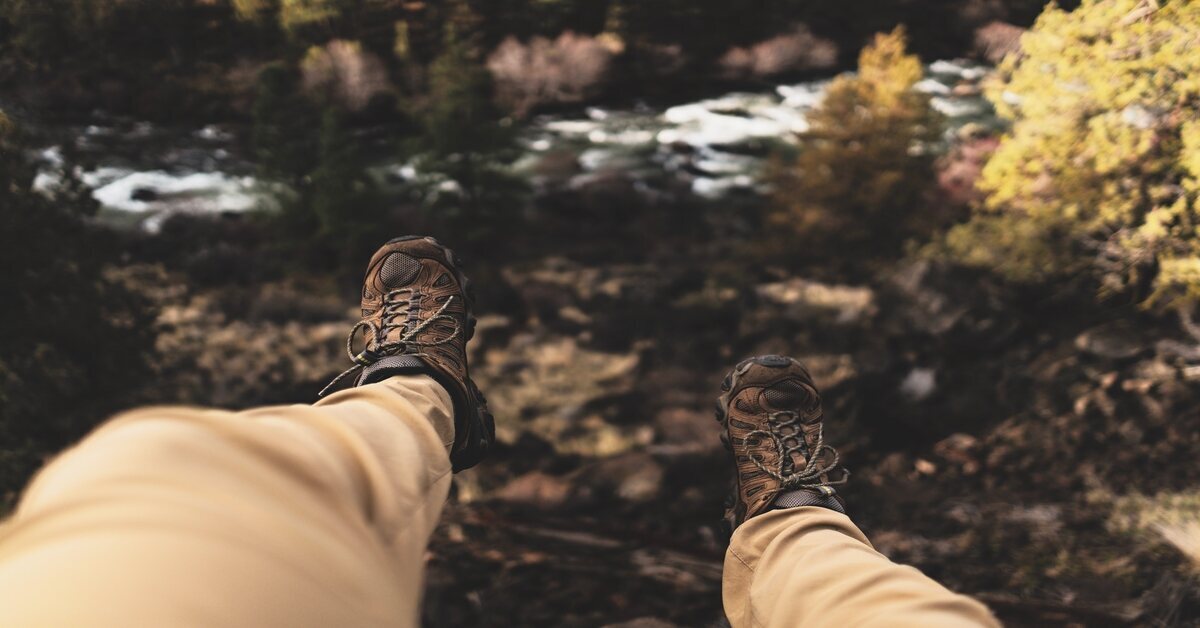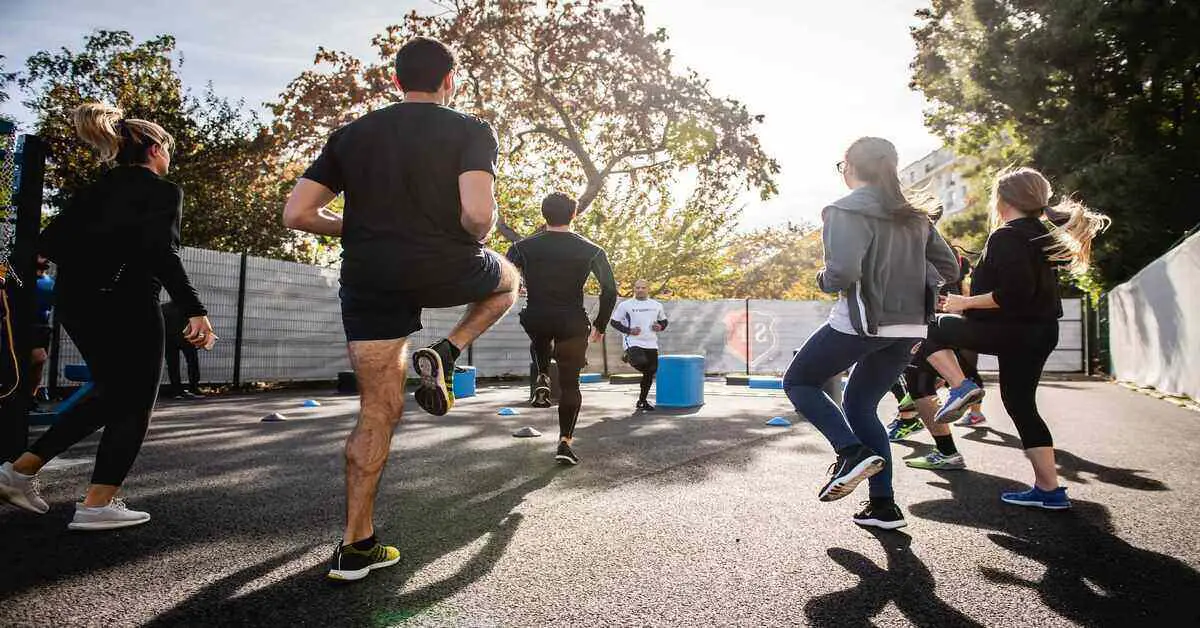Knee pain is a common occurrence among hiking enthusiasts. When trekking, you put your knees through a lot, and it’s very easy to feel some discomfort in the knee area. Knee pain while hiking downhill is the most common. You can also feel knee pain when hiking uphill, hiking on uneven ground, or hiking long distances without rest. In this post, we will discuss ways to reduce hiking knee pain.
Symptoms of knee pain caused by hiking
Common symptoms of knee pain while or after hiking are swelling and inflammation throughout the joint area. Other common symptoms include pain, cramping, or stiffness in the joints. You may experience aching as well if you’ve been pushing yourself at a fast pace or walked downhill for long periods without stopping. All of these show that you have sustained an injury while hiking or walking downhill for too long. It’s important to take proper steps to prevent knee pain when hiking, such as changing your route, using ice baths, and wearing a knee brace.
What causes hiking knee pain
The leading cause of knee pain is the cartilage throughout the knee. Cartilage is the sparse tissue that covers and protects your bones from rubbing against one another. It also provides a smooth surface for the bones to move across rather than grinding together. The cartilage within your knees can be damaged by hiking downhill too much or as a result of continuous pressure on it from hiking uphill for long distances. This causes the cartilage to begin to wear down and therefore may result in knee pain, aching, stiffness and swelling.
LEGAL DISCLAIMER: This post may contain affiliate links. I may earn a commission if you click an affiliate link and make a purchase. Also, as an Amazon Associate, I earn from qualifying purchases.
Preventing hiking knee pain
The best way to prevent knee pain while hiking is to not walk downhill for long periods. Instead, keep hills at a reasonable grade and take breaks often. You could even alternate between hiking uphill and downhill on the same trail if it’s too steep to hike up one side only.
How to treat knee pain
If you notice hiking knee pain, try to stop and rest your knees as soon as possible. And if the pain is extreme, keep walking very slowly and gently massage your knees until they feel better. Once the pain has subsided, a knee brace can help support your knees while you continue hiking. A good knee brace will provide comfort for your knees and keep them from excessive movement. Use a knee brace for hiking knee pain if you can’t stop hiking until the pain subsides. If you only go hiking occasionally, knee sleeves will work.

How to treat and prevent hiking knee pain
If you follow the steps above to prevent hiking knee pain and are still experiencing discomfort, there are other treatment/prevention options available in addition to a knee brace. Here they are:
1. Ice baths
Ice baths may help reduce swelling and muscle inflammation caused by hiking downhill for long periods. They will also help relieve minor pains from overuse or even more serious injuries sustained while hiking. Note that you will require several ice baths to get the full benefits of a knee brace. You can use this waterproof double inflatable ice bath.

2. Compressions wrap
Wear a compression wrap around your knees for extended periods where you will be walking downhill. This is an optional step in preventing knee pain while hiking but can help reduce or prevent swelling and hurt caused by long periods of downhill walking.
3. Keep your legs raised when resting
When you’re sitting down and taking a break while hiking, it’s helpful to keep your knees slightly elevated so that they aren’t compressed on the ground. This will force blood back into your lower extremities, which helps prevent stiff muscles from forming throughout the leg area. Keeping your knees off the ground for short periods throughout a long hike can prevent stiff knee problems later on.
4. Hike with trekking poles
Using trekking poles while hiking is one of the best ways to prevent and reduce knee pain. A pole takes the stress off your knees and is helpful, especially when carrying a backpack. In addition, hiking poles provide balance and prevent falls which might lead to severe injuries. If you tend to hike on hills often, always carry trekking poles. check out these lightweight collapsible trekking poles on Amazon.

5. Exercise before hikes
By exercising your muscles at least an hour before your walk or hike, you can eliminate potential injuries that can affect your knees. Regular exercise is the best way for people to go on long hikes without knee pain.
Hikers and walkers alike need to keep their muscles strong to prevent injuries such as walking knee pain, which occurs when the patellar ligament is overstretched due to walking or running on a slanted surface for an extended period. If you live in a hilly region, it’s essential to exercise your legs several times per week so you’re ready for a walk or hike with friends or family members.

6. Pick the right hiking shoes
Using the correct hiking shoes to hike or walk downhill is crucial in preventing knee pain when hiking. The wrong shoes will strain your back, hips, and knees. Shoes with a rocker bottom are recommended to reduce pressure on your feet and ankles as you hike through the rough terrain. So, choose comfortable boots that are sturdy and fit properly.

7. Reduce the weight of your backpack
This is something many hiking lovers don’t think about when going hiking. Do not pack too many items in your backpack since you will be the one carrying them. The added weight will cause knee pain making trekking very difficult. Therefore, remove any item that is not essential. This way, your knees will have just enough pressure to keep you going without feeling uncomfortable.
8. Wear compression socks
Compression socks are as important as high-quality hiking shoes. If you wear them, your muscles will recover quickly after a hike or when you take a short break. Also, they improve joint and muscle stability. Do not forget to include it in your gear list if you’re looking to prevent knee pain.
9. Include Omega-3’S in your diet
Omega-3’s reduce inflammation and, in the process, help reduce joint and muscle pain as well as lubricating your joints. The body doesn’t produce these fatty acids, so you need to get them from foods rich in them like olive oil, egg yolks, walnuts, and chia seeds. If you’re looking to increase the amount of Omega-3’s in your diet, then you can take a natural Omega-3 supplement.

10. Using crampons for ice climbing
Try using crampons while ice climbing. Crampons are small pointed spikes with a rubber grip that you put on your boots to help provide traction when walking up or down slippery hills. It’s vital to use crampons when ice climbing because of the potential for slipping and falling, which can damage your ligaments and joints.

Preventing knee pain while hiking downhill
If you have knee problems from any activity, it’s important to stretch before getting active. Stretching will loosen up your joints and muscles, which allows you to be more flexible. The increased flexibility helps prevent strains and sprains when walking downhill or hiking.
Another way to prevent knee pain while hiking downhill is to take the proper steps when on a steep hill. When walking downhill, keep your weight over your ankles, so you don’t put excess pressure on your knees. If the trail has handrails, use them for extra support.
How to prevent knee pain while hiking with bad knees
If you suffer from knee problems in general or have had a negative experience with hiking knee pain before, try using trekking poles when walking up hills. You’ll be able to get more leg power by pushing down on the trekking poles to help reduce the pressure your knees are feeling. Knee braces are also helpful if you have bad knees. To keep the braces fresh, ensure you wash and dry them before going for hikes. Check out some hiking tips for seniors.
Preventing knee pain with air compression leg massager
Air compression leg wraps help with the recovery process. They can reduce inflammation, swelling, and stiffness in the joints of the legs caused by hiking up or downhill. Check out these high-quality air compression leg wraps on Amazon.

How to prevent knee pain during long hikes
If you’re planning on taking a long hike over hours, days, or weeks, it’s important to prepare your body for the journey. You can prevent knee pain from a long hike by doing stretching exercises for your legs and taking rest breaks along the way.
The process of walking downhill more than walking uphill while hiking isn’t good for your knees in general. Even though you may be taking rest breaks along the way, it’s important to remember that your knees still need time to rest while you sit down for a break. It’s okay to take a nap along the way and let your knees rest while you’re asleep.
How to prevent knee pain after hiking
Right after you’ve finished your hike, it’s crucial to take a break and let your body rest. It’s not good practice to head straight home after you’re done with the hike because if you do, the muscles in your legs will be too tight when you get home. Instead of heading straight home, take a break and eat a decent meal before heading back to the house.
Also, hydrate after your hike because drinking water helps reduce pain in the legs from bruises and swelling while hiking on uneven terrain for hours.
Leg and ankle exercises to prevent knee injuries while walking or hiking

- Standing calf raises – Raise your heels up off the ground while keeping your toes on the floor. Repeat this for 15 seconds, and then lower your heels back down to rest for a few seconds. Do this 10-12 times, and then rest for a few seconds in between sets.
- Seated calf raises – With your toes and heels tucked under, lean in towards the wall behind you and raise your heels off of the ground as high as possible without straining yourself. Squeeze for just a moment before lowering heels back down to rest. Repeat this exercise 10 to 12 times, then take a few seconds to relax before doing another set.
- Standing gluteal or hamstring stretch – While keeping the same standing position, lean forward at your waistline while lifting and extending one leg out behind you. If it feels comfortable enough, bring your arms down and stretch out your hands to further ease the tension. Stretch each side of your body 10 to 12 times before moving on to the next leg exercise for knee pain while walking or hiking.
Knee pain can be one of the most unpleasant hiking conditions to endure. However, if you take precautions and listen to your body, you will prevent knee pain while hiking and avoid serious injury. If necessary, seek medical attention for hiking knee pain as soon as possible.

